
Soweto the histoy and culture
1 day
Instant confirmation
About this activity
Itinerary
This is a typical itinerary for this product
Stop At: Apartheid Museum, Northern Park Way and Gold Reef Rd, Johannesburg 2001 South Africa
The Apartheid Museum is a museum in Johannesburg, South Africa illustrating apartheid and the 20th century history of South Africa. The museum, part of the Gold Reef City complex, was opened in November 2001.[1]
The Apartheid Museum allows visitors to experience the racial segregation that occurred during apartheid by separating them by racial appearance classified by the width of the nose, the kinks in hair, skin pigmentation, and size of lips as well as the language they spoke an most ultimately their race. The apartheid museum is a symbol of the democracy South Africa has and diversity which was granted to the whole country in 1994.
All races are welcome at this museum.
At least five times a year events are held at the museum to celebrate the end of apartheid and the start of a beautiful democracy for the people of South Africa.[2]
Duration: 2 hours
Pass By: Baragwanath Medical Centre, 8103, Bara Mall, Bara Road, Diepkloof, Johannesburg, 1860, South Africa
Chris Hani Baragwanath Hospital is a hospital in Johannesburg, South Africa, and the largest hospital in Africa.[1][2] It has 6,760 staff members, 3,400 beds and occupies 70 ha (170 acres). The hospital is located in the Soweto area south of Johannesburg. It is one of the 40 Gauteng provincial hospitals, and is financed and managed by the Gauteng Provincial Department of Health. It is a teaching hospital for the University of the Witwatersrand Medical School, along with the Charlotte Maxeke Johannesburg Academic Hospital, Helen Joseph Hospital and the Rahima Moosa Mother and Child Hospital.[3]
The Imperial Military Hospital, Baragwanath, was built in what today is Diepkloof in 1942 for convalescing British and Commonwealth soldiers. Field Marshal Jan Smuts noted during the opening ceremonies that the facility would be used for the area's black population after the war. In 1947 King George VI visited and presented medals to the troops there. From this start grew Baragwanath Hospital (as it became known after 1948), reputedly the largest hospital in the southern hemisphere. In 1997 another name change followed, with the sprawling facility now known as Chris Hani Baragwanath Hospital in honour of the South African Communist Party leader who was assassinated in 1993.[4]
Stop At: Orlando Towers, Soweto, Johannesburg South Africa
Orlando Power Station is a decommissioned coal-fired power station in Soweto, South Africa. The power station was commissioned at the end of the Second World War and served Johannesburg for over 50 years.
Duration: 2 hours
Stop At: Vilakazi Street, Soweto, Johannesburg 1804 South Africa
Vilakazi Street is the Soweto street of the greats, named after Dr Benedict Wallet Vilakazi, a distinguished writer and educator who wrote the first poetry book published in Zulu.
The homes of two Nobel Peace Prize laureates – South Africa’s first democratically elected president, the late Nelson Mandela, and Archbishop Emeritus Desmond Tutu – are found on Vilakazi Street. This is the only street in the world that can boast having had two Nobel Laureates as residents.
Duration: 4 hours
Stop At: Hector Pieterson Museum, 8287 Khumalo St, Soweto, Johannesburg South Africa
The Hector Pieterson Museum is a large museum located in Orlando West, Soweto, South Africa, two blocks away from where Hector Pieterson was shot and killed. The museum is named in his honour. It became one of the first museums in Soweto when it opened on 16 June 2002. A companion museum nearby is Mandela House, the former home of Nelson Mandela and his family, which has been run as a museum since 1997.
The total cost of the Hector Pieterson Museum project was Rand 23.2 million, which was covered by a 16 million rand donation by the Department of Environmental Affairs and Tourism and 7.2 million rand donation from the Johannesburg City Council.
The museum covers the events leading up to, and during, the anti-Apartheid Soweto Uprising.
Duration: 2 hours
Read more
Show less
This is a typical itinerary for this product
Stop At: Apartheid Museum, Northern Park Way and Gold Reef Rd, Johannesburg 2001 South Africa
The Apartheid Museum is a museum in Johannesburg, South Africa illustrating apartheid and the 20th century history of South Africa. The museum, part of the Gold Reef City complex, was opened in November 2001.[1]
The Apartheid Museum allows visitors to experience the racial segregation that occurred during apartheid by separating them by racial appearance classified by the width of the nose, the kinks in hair, skin pigmentation, and size of lips as well as the language they spoke an most ultimately their race. The apartheid museum is a symbol of the democracy South Africa has and diversity which was granted to the whole country in 1994.
All races are welcome at this museum.
At least five times a year events are held at the museum to celebrate the end of apartheid and the start of a beautiful democracy for the people of South Africa.[2]
Duration: 2 hours
Pass By: Baragwanath Medical Centre, 8103, Bara Mall, Bara Road, Diepkloof, Johannesburg, 1860, South Africa
Chris Hani Baragwanath Hospital is a hospital in Johannesburg, South Africa, and the largest hospital in Africa.[1][2] It has 6,760 staff members, 3,400 beds and occupies 70 ha (170 acres). The hospital is located in the Soweto area south of Johannesburg. It is one of the 40 Gauteng provincial hospitals, and is financed and managed by the Gauteng Provincial Department of Health. It is a teaching hospital for the University of the Witwatersrand Medical School, along with the Charlotte Maxeke Johannesburg Academic Hospital, Helen Joseph Hospital and the Rahima Moosa Mother and Child Hospital.[3]
The Imperial Military Hospital, Baragwanath, was built in what today is Diepkloof in 1942 for convalescing British and Commonwealth soldiers. Field Marshal Jan Smuts noted during the opening ceremonies that the facility would be used for the area's black population after the war. In 1947 King George VI visited and presented medals to the troops there. From this start grew Baragwanath Hospital (as it became known after 1948), reputedly the largest hospital in the southern hemisphere. In 1997 another name change followed, with the sprawling facility now known as Chris Hani Baragwanath Hospital in honour of the South African Communist Party leader who was assassinated in 1993.[4]
Stop At: Orlando Towers, Soweto, Johannesburg South Africa
Orlando Power Station is a decommissioned coal-fired power station in Soweto, South Africa. The power station was commissioned at the end of the Second World War and served Johannesburg for over 50 years.
Duration: 2 hours
Stop At: Vilakazi Street, Soweto, Johannesburg 1804 South Africa
Vilakazi Street is the Soweto street of the greats, named after Dr Benedict Wallet Vilakazi, a distinguished writer and educator who wrote the first poetry book published in Zulu.
The homes of two Nobel Peace Prize laureates – South Africa’s first democratically elected president, the late Nelson Mandela, and Archbishop Emeritus Desmond Tutu – are found on Vilakazi Street. This is the only street in the world that can boast having had two Nobel Laureates as residents.
Duration: 4 hours
Stop At: Hector Pieterson Museum, 8287 Khumalo St, Soweto, Johannesburg South Africa
The Hector Pieterson Museum is a large museum located in Orlando West, Soweto, South Africa, two blocks away from where Hector Pieterson was shot and killed. The museum is named in his honour. It became one of the first museums in Soweto when it opened on 16 June 2002. A companion museum nearby is Mandela House, the former home of Nelson Mandela and his family, which has been run as a museum since 1997.
The total cost of the Hector Pieterson Museum project was Rand 23.2 million, which was covered by a 16 million rand donation by the Department of Environmental Affairs and Tourism and 7.2 million rand donation from the Johannesburg City Council.
The museum covers the events leading up to, and during, the anti-Apartheid Soweto Uprising.
Duration: 2 hours
Included
- Private tour
- All Fees and Taxes
- Entry/Admission - Apartheid Museum
- Entry/Admission - Vilakazi Street
- Entry/Admission - Hector Pieterson Museum
Not included
- Alcoholic drinks (available to purchase)
- Lunch
- Entry/Admission - Orlando Towers
Additional
- Confirmation will be received at time of booking
- Wheelchair accessible
- Children must be accompanied by an adult
- This is a private tour/activity. Only your group will participate
Features
Sport
65%
Tourism
55%
Cultural
35%
Aquatic
15%
You may also like









 See all 19 Collections
See all 19 Collections
Click to discover other experiences
See all
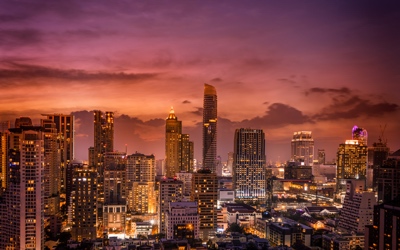
Collections
City tour
34 Activities
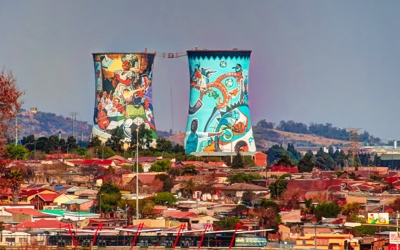
Collections
Soweto tour
41 Activities

Collections
Pilanesberg National Park
47 Activities
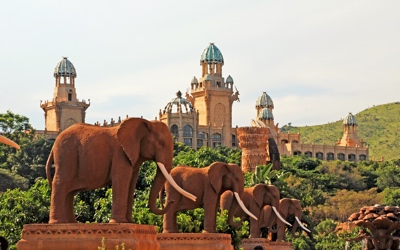
Collections
Sun City Park
13 Activities

Collections
Wildlife
8 Activities

Collections
Outdoor activities
7 Activities
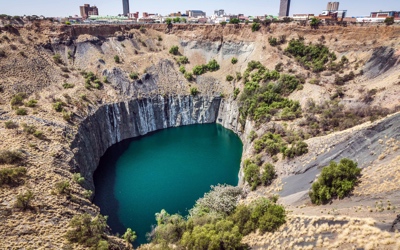
Collections
Mines
10 Activities
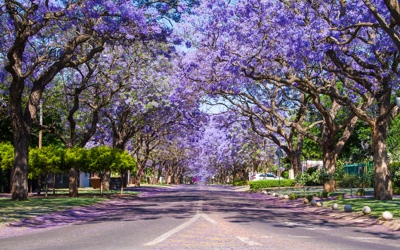
Collections
Pretoria city
11 Activities

Collections
One Day Safari trip
44 Activities
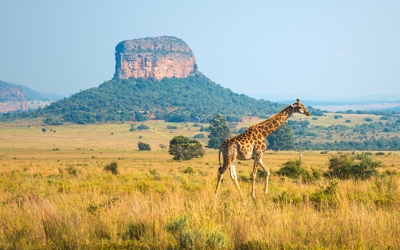
Collections
Long Safari trip
73 Activities

